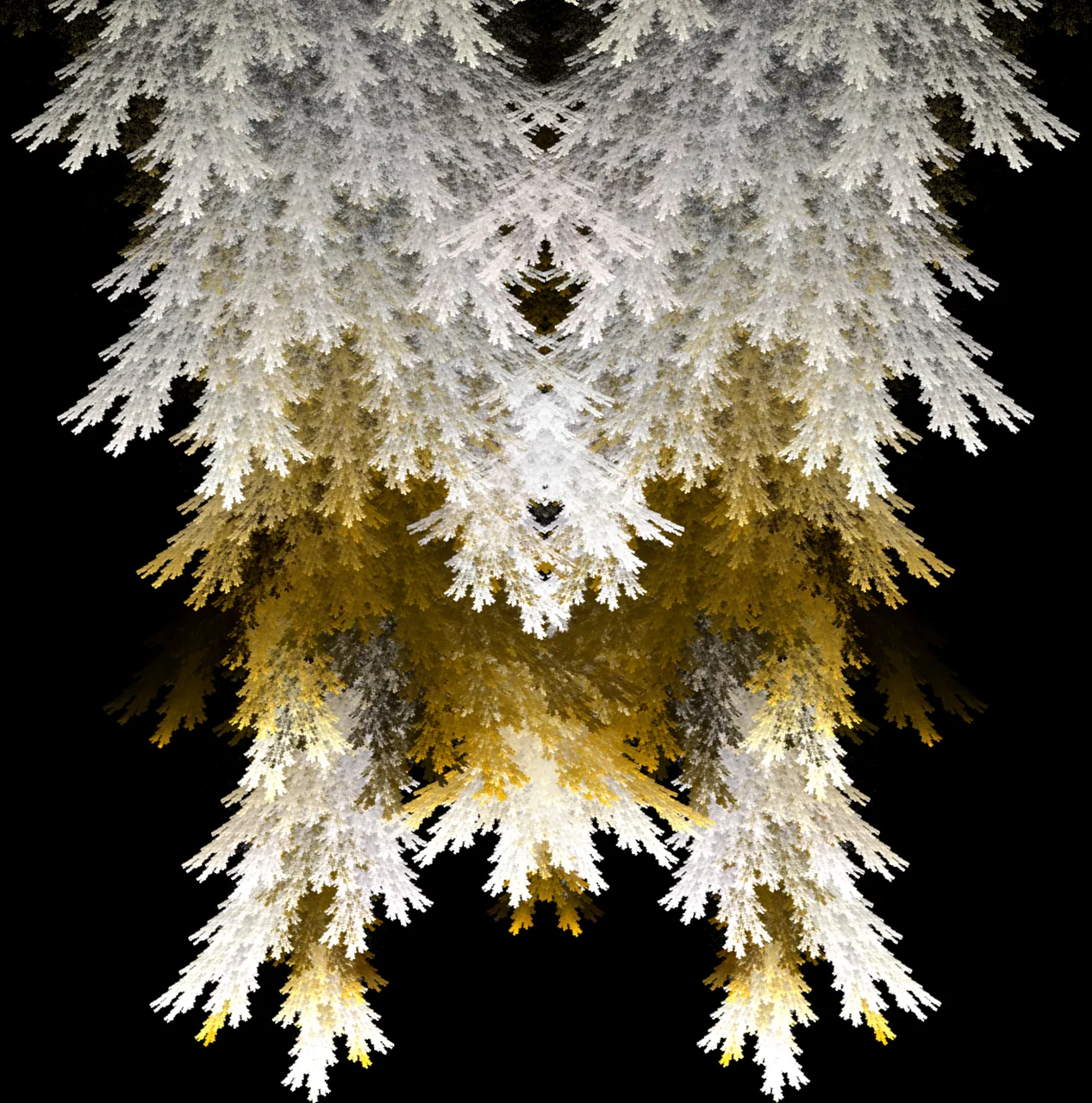One pure fractal made in Apophysis 2.09, layered and mirrored and put together

Depending on how you perceive shapes, you may perceive more than any number of faces and eyes in this lovely web pattern from Sultruviam.
The point I want you to understand is that the colony that inhabits that beautiful thing certainly sees you, and has enough mouths to eat you.
This is why the sands of Sultruviam are so clean, or at least appear so – almost the instant a body falls at the end of its natural life, the tiny sand spiders cover it and weave their web over the body. If the creatture is still alive, their venom quickly and probably painlessly ends that – I say probably because obviously I have no direct experience, but there is some observation that birds and small mammals overcome seize their writhing and expire peacefully, and there is plenty evidence that native Sultruviamin humanoids use sand spider venom for local anesthetic in controlled small doses by putting out small pieces of meat and then collecting the sand spiders there to put on the body part needing anesthetic.
Sand spiders in small numbers can also clean up a festering wound or dead tissue with equal skill – one might say they provide their own stitching as well, and leave when there is nothing more to eat. In that case, they always find small piece of meat always left for them so they can be returned to the sand.
But it is important to note: this is a use of sand spiders by order of a few hundred at a time, and fabric makers' lust for their silk would have gotten them into large trouble had not my uncle, Admiral and Acting Ambassador Benjamin Banneker manually done the list of species on Sultruviam that were not to be disturbed, and created a subcategory called “Abundant but Essential in Abundance.”
By weight, Sultruviam sand spiders comprise one-tenth of the supposed sands of the planet. To understand just how many of them there are, calmly resting and waiting as other beings walk and run and sift and fly above those sands, go to your local beach and fill a bucket with sand and then think about how many buckets it would take to clear that beach and the sea floor attached to it. Divide that number by ten, and that's the number of sand spiders you would have there.
Put another way: there are more grains of sand on Sultruviam, largely a desert world, than there are stars in the known universe … but to make the math easy, make the numbers equal. There are at least as many Sultruviam sand spiders as would account for about one-tenth of the stars in the known universe.
I said all that just to say that even if a silk poacher on Sultruviam was fast enough to get to a body while it was still in the shroud the sand spiders put over it, coming among the billions of sand spiders at work on that body would be an invitation for billions more to put said poacher out of his or her line of work permanently. There is no organic creature large enough anywhere in the universe to avoid the same outcome, because any area of sand large enough to accommodate a prone body of humanoid size or larger has sand spiders underneath it by the quintillions – billions of billions.
My uncle had a human-sized model of ballistic gelatin put out on the sand to demonstrate, and then had three more dropped in varying positions on the site and manipulated to simulate movement around the first model and then attached the resulting video to his documentation on why sand spider silk, as beautiful as it is, is not to be harvested. The sand spiders withdrew with their shrouds into the sands in a mere two hours, leaving nothing behind … then, my uncle had a model of ballistic gelatin thrown out with a fleet-grade spacesuit on it, and attached a camera. The sand spiders simply used sand friction to rub it apart at the seams, and then got on to their usual work.
“I put that video in there,” he said, “to let the poachers know that with the cost of needing protective gear better than what we use in space, it just isn't profitable.”
I laughed.
“Not that it isn't survivable, but just there isn't any profit in it,” I said.
“Oh, Khadijah, you know that someone can always find a body to throw at a situation for money,” he said. “But what people like that aren't going to do is throw away what they really value – the money! To even pay a scientist to try to develop better than a fleet-grade protective suit will be more than the people interested in sand spider silk will want to pay!”
Not yet has Benjamin Banneker been proven wrong – Sultruviam's sand spiders have yet to enjoy a meal of human silk poachers, so far as we know!
This story was partially inspired by this article ... the question about grains of sand on Earth versus stars in the universe is a old one, and the answer is surprising!